
Albert Hash (1917-1983) was a beloved fiddler and instrument maker from Grayson County, Virginia. He touched many peoples' lives and helped ensure that mountain music and instrument making traditions would be passed on to new generations.
"If the wind on Whitetop sounds vaguely like fiddle music, it is most likely the mountain's way of paying tribute to a fine country gentleman."
Childhood & Early Life
Albert had three brothers: Rudy, Dennis and Ernest who played and danced. His older brother, Dennis, was somewhat of a hobo, hopping trains and working part-time as a professional dancer in circus and carnival acts. His brothers, Rudy and Ernest, both played the guitar.
Albert had heard his family play before, but it wasn't until he heard his neighbor, Corbett Stamper, play the fiddle that he became really intrigued with the instrument. One day during a thunderstorm, Corbett played the fiddle for Albert, and the instrument struck his interest like the lightning streaking through the sky that day. Here is Corbett Stamper's account of that afternoon as he related to Frank Weston in an interview conducted in 1982: "Albert's mother lived on Helton and rented a field of corn one time with us and they came over to hoe corn one day. Up about ten thirty-eleven o'clock it came up to rain, a big thunder storm. She said "it's too wet to hoe today". Well after it quit lightning and thundering, I had a little old fiddle and I reached under the bed and pulled the fiddle out and I played Sally Gooden and I believe Old Joe Clark, Albert was about pretty close to ten years old. I noticed he was close up around his mother's knees and he was whispering to her. She said "Corbett, Albert wants to hear you play more of this fiddle". I played about an hour then. He said "I want to be with you, I want to learn to fiddle". I said "I have a five string banjo here too". "Well" he said "I'd rather learn the fiddle than the banjo".
Albert decided he needed a fiddle, but his family was too poor to afford one, so he decided to make one. One night, he had a dream that he made a fiddle, and the next day, he set out to make his dream come true; Albert Hash made his first fiddle at age ten, at the heart of the Depression times. Here is an audio clip with Albert talking about making his first fiddle in an interview.
Music
Albert's step-uncle, Jim Reedy, taught him to play the Arkansas Traveler and Nancy Blevins. (You can listen to audio link below of Albert's story of Nancy Blevins and playing the tune). He picked up tunes from other folks, like the Chinese Breakdown from Ed Spencer, "Flop-eared Mule" from John Stringer, and some songs from records of Grayson and Whitter and the Skillet Lickers.
Albert played his first show at 12 years of age. In an interview with Frank Weston, Albert told this story: "I was 12 years old when I played my first place out. We had a little redheaded preacher lived down the creek here, very fine preacher. They would have these plays at the ending of the school term, and parents would come in, some of them thought that they were smart enough to make speeches. Me and my little friend Bruce Duvall were musicians for the play, he could play the guitar well, and I played the fiddle. They had us back behind of a little curtain; Ms. Alta Perkins, our teacher, told us that after each act of the play or speech, we would play a tune. Well, we were getting along pretty well. Then, it was time that Preacher Murphy gave a speech and then led a prayer. We figured we better have a good 'un picked out for him. So, as soon as he stopped, we lit into playing Old Molly Hare as fast as we could. Here Ms. Alta came running, saying "Not now, boys, not this time!" And that was the first show I played out."
One of Albert's first bands was with his brother Ernest, Gaither Farmer, and Huck Sturgill. Gaither Farmer, a close neighbor, was an accomplished clawhammer banjo player. He could do tricks like swinging his banjo out on "Cluck Ole Hen" while plucking the strings. Huck Sturgill was known to be a great singer and guitar player; he grew up in West Virginia, where his father worked in the mines, before moving back to Fees Ridge. While living in WV, he learned blues songs from black musicians that influenced his singing and guitar style. Ernest rounded out the band on guitar, and Albert was of course on fiddle. They played for house parties, dances, schools, and suppers.
Albert was very influenced by the fiddling of GB Grayson, from Laurel Bloomery, TN who often visited the Whitetop/Konnarock area. After Grayson was killed in an accident, Henry Whitter was left without a fiddler. He was living in Crumpler, NC at the time and heard 17 year old, Albert play. Whitter thought Albert's fiddling sounded a lot like Grayson's and so he asked him to play with him. Whitter had a Model A Ford car, and they would play schools and theaters around a pretty good area. Whitter could play a lot of tunes on the fiddle like GB could, and taught Albert several of their songs as well; he also had made a fiddle that he had Albert to play at their shows. Albert performed with him for over a year until Henry's health declined.
Albert also played with many other musicians through the years, including the Whitetop Mountain Boys with Frank, Henry and Dent Blevins in the 1940s, John Yates & the Spice Bottom Boys, the Virginia Carolina Boys with Wayne and Max Henderson, Jim Poe & the Carolina Troubadors, a group with Olabelle Reed, Cassie and Ethel Greer, Shorty and Slim's band with Estill Ball and Blair Reedy, and of course in the Whitetop Mountain Band with Flurry Dowe, Emily and Thornton Spencer, and Tom and Becky Barr. In these groups, Albert played on radio stations in Marion-WMB, Galax-WBOB, Boone, and Jefferson-WKSK. He also played at folk festivals, fiddlers conventions, schools, churches, theaters, for State Governors and dignitaries and for all sorts of events. Albert's versions of tunes like Nancy Blevins, Hangman's Reel, Old Sport, Pretty Little Indian, Little Brown Hand and many others were quite influential in inspiring many old time fiddlers to come.
Fiddle-making
When, Albert was around 19 years old, he had an appendicitis. A local lutheran preacher, Reverend Kenneth Killinger, paid for Albert's hospital bill. So, in return, Albert made him a fiddle; this was the first fiddle he did any carvings on. When Albert's second daughter, Audrey was born, he paid her hospital bill with a fiddle as well. It was a beautiful blond fiddle with an Indian head on the scroll, and inlays.
Albert worked as a tool and die maker during World War II, and later worked as a machinist for Sprague Electric Company in Lansing. Albert Hash used his engineering and mechanical skills to make all sorts of machines, including several to help him build instruments, such as a machine that cut out a rough outline of a fiddle body. Still yet, he used a pocketknife for a lot of his carving work.
Albert made fiddles for many people, one of the more famous musicians, was Harold Hensley. Harold played in Hollywood movies, tv shows, and music studios. He would send Albert postcards letting him know when he would be playing his fiddle on shows.
Adulthood & family
While in school, he met Ethel Ruth Spencer of Fees Branch, and they married in 1944. Ethel's younger brother, Thornton stayed with them often and learned to fiddle from Albert. They would play school and box suppers together in the late 1940s. In the 1970s, Albert and Thornton formed the Whitetop Mountain Band together.
During World War II, Albert wanted to join the Navy, but was turned down due to a heart murmur. He still wanted to help with the cause, so he briefly moved up to Northern Virginia, where he worked in a torpedo factory and naval shipyard. This is where Albert first learned his machinist skills that would help in making his instrument building tools later on. It was also during this time, Albert and Ethel exchanged letters and then married (see letters below). They lived in Alexandria for a year; then they moved back to the Fees Branch area in 1945, and then to neighboring Lansing, NC in 1956. They had two daughters, Joyce Mae and Audrey Marie. Audrey followed in her father's footsteps of instrument making and playing music.
For a while, the family farmed, and Albert made fiddles to sell. Albert got an old schoolbus from Wilkesboro, and brought it up to their home in Lansing, and he used it for his shop. He would make instruments, guns, clocks, and even wooden toys for Audrey and Joyce. Albert then got a job at Sprague Electric in Lansing, NC and worked as a machinist there, then worked at Brunswick Powder in Sugar Grove, VA until he retired.
Later life & Legacy
Albert gave lessons at Wilkes Community College for many years sharing his knowledge with countless students. Albert also helped start the old time music program at Mt. Rogers Combined School in Whitetop, VA. Albert, his daughter Audrey, Thornton Spencer and Emily Spencer started volunteering at the local fire department teaching old time music lessons to the community. Later, he began giving lessons at Mt. Rogers School to the students there. After he passed away, Audrey carried on the music program until she moved to Lansing, NC. Emily Spencer now carries on the old time music program and it has become an every day class that students get academic credit for. It also has been featured on television, newspapers, radio and got nominated for a Grammy for schools. The school band is named the Albert Hash Memorial String Band.
After his death in 1983, the Commonwealth of Virginia presented Ethel with a framed copy of House Resolution 18, proclaiming a moment of silence in his honor.
Audrey, Albert, and the music program were featured on a CMT program on instrument making and music in 2004. Albert was inducted into the Blue Ridge Hall of Fame in 2010. Each year, the Albert Hash Memorial Festival is held in honor of Albert with music, instrument making demonstrations and crafts.
Albert will be remembered not only for his talents, but his kind heart and generosity to those who he met in life. He shared his knowledge of instrument building with Audrey Hash Ham, Wayne Henderson, Elmer Powers, Randall Eller, Walt Messick, Jack Branch and countless others who in turn inspired Gerald Anderson, Jackson Cunningham, Chris Testerman, Carl Powers, Spencer Strickland, and more.
His music was passed on to Thornton, Emily Spencer, Dean Sturgill and countless others who in turn have shared their knowledge with other generations following in the tradition like Kilby Spencer, Jacob Bowen, Crystal Blevins, Blake Rash, Chris Testerman, and countless others.
Stories from friends & family
"When I was born, my daddy paid my hospital bill with a fiddle. He walked twenty miles to do that, Fees Ridge to West Jefferson, to sell the fiddle to pay for it. And the fiddle was absolutely beautiful. It had an Indian head and a cornucopia of flowers on it. He always teased me, as to how he could have traded a fine fiddle like that for a scrawny little runt like me. Anyway, when I made my first fiddle, it was along about dad’s birthday, and I gave it to him for his birthday. And he said I would rather have had that than a brand new Cadillac, it was a good thing because I never could have afforded one.
He sold the fiddle he paid for my hospital bill with to Bud Ray; he worked at Ray’s Hardware. He took it home and put it in a drawer for years, the strings had never been changed; it was in absolute mint condition. Later on when I was in my thirties, he was a member of the Episcopal Church, and the preacher wanted me to build a harp for the church, I built one, and when I went for the dedication for that, Bud had left that fiddle on the altar, saying it was ours back to do whatever we wanted to with it."
Daddy would always give me help by saying, "now Audrey, I believe if you did it this way, it might work just a little better." He never quarreled at me no matter how many times I messed up. He would just help in way you didn't actually know he was helping you.
Listen to Audrey's interview for more stories on Albert.
Thornton Spencer, brother-in-law and bandmate
"They had a festival at Troutdale fire department, a whole lot of musicians were there. Some revival musicians was just getting into the music, and they were pretty prejudiced against pretty much everything but old time music. I went in there and I was talking to one of them, and he looked down the hill and there was Albert playing with a bluegrass band. He looked down and said to me, "Is that Albert down there playing with a bluegrass band?" I said, "yeah, believe it is." He said, "Surely, he wouldn't play bluegrass!" Well, Albert quit, came on up where we were at, the feller jumped Albert and said, "surely you wouldn't bluegrass, would you? You were playing with a bluegrass band!" Albert said, "Oh yeah, I do sometimes, but I always wash my fiddle when I get through." And then Albert walked on.
"I could pick the guitar some, but I don't really remember if I had ever tried to fiddle. I might have. Albert was fixing to go to Appomadox to visit his brothers, and I was staying with Ethel and the kids that week. There was a fiddle on the wall, one he had fixed up. I pulled it off the wall and sawed on it, and he said, "I believe you could to learn how to fiddle. I will show you two tunes, and if you can play them by the time I get back, I will give you that fiddle." He showed me Ragtime Annie and the Chicken Reel. I was probably about 13 or 14 years old, and boy, I really wanted that fiddle. So, I liked to run them all off, squawking on that fiddle, trying to learn how to play them tunes. Ethel finally sent me to the grainery. I could play them a little bit, enough to recognize the tunes, so when Albert got back, he gave me the fiddle."
"Albert probably influenced more people with making instruments and music than anyone that has ever been in this area. He got some credit, but not as much as should have, in my opinion. His fiddling style was hard, he had different bowlicks, used his fingers good, and put lot of notes in. He didn't criticize people as much as he ought to. When he taught me tunes and I asked if I had them right, I know if he said "pretty much", it wasn't right. But if he said, "yeah, that's right, I knew I had it."
Archie Elmer Powers, friend and fiddle maker:
"Albert was the one who learned me how to make fiddles. When I made my first fiddle, Albert had started the back out of poplar wood. Back in those days, it was hard to get wood, couldn't find any curly maple. And you had no electric tools at all, all hand tools, neither us or Albert even had electricity in our homes then. Well, he had the back started, and gave it to me to start my first fiddle. Albert worked at Sprague Electric then, and every evening when he got off from work, he would stop to see how I was getting along with it. And then every morning, he would leave what I needed to work on it with in the mailbox for me. You couldn't believe what he went through for me. I had seen that fiddle he played for so long, prettiest I'd ever seen, so I thought I was gonna do the same thing, and when I got mine made, it was so bad, I told Albert I'd never try another fiddle. And he told me, "now wait til Sunday, and I'll take you up to Orie's (his father-in-law's), and I'll show you the second fiddle I ever made. And he took me up and showed it to me, and that gave me the courage to make another because his second fiddle wasn't perfect either. And I kept making fiddles ever since then.
Lord, I walked from here in Lansing up the Fees Ridge in the snow to see Albert. He was the most honest person I ever met. You could make a mistake doing something, and he could even make you feel good about it. That's the truth. He had a knack for that, make you feel good about everything. And he never seen a stranger. He helped everybody that needed help, he helped them."
"We was always making something. We was going to make an airplane, we figured out every detail on how it would work, he said it would have to fly. I was taking flying lessons, flying a 150- Cessna at the time, in the early 70's, but he said he'd never would fly with me, though; Albert was afraid to fly.
Another time, we set up one night, way in the night and made us an electric fiddle. It made the awfullest noise you'd ever heard, you could hear it all over Lansing. We made an electric harmonica one time too. We glued a stick on the end of it, and put a crystol off a record player on the end, and it picked up and would play. One time, we made one of them ole juice harps. He bent the wire around a hammer handle, and then put a clock spring in it, they had to have that spring to vibrate. We made a machine, a little old square box to record music on, had our own recording outfit. We got blank records from Galax, Wilcox Gay Records, they were red and Audrey was a little thing and would watch them spin around.
He made a grandfather clock, and when it would strike it would make a chord on the guitar. It was the prettiest thing you'd ever seen. He made a ship on the top of it that would drop across the waves with the clock hand. He could do anything, Albert. He made the machine that made the wheels for the clock. That clock was made out of glass wheels, before that he made them from wood. He would guarantee his clocks for his lifetime, he said, "that's as far as I can guarantee them, is my life."
That's how I met him, was working on clocks, he visited my grandpa, he walked across the mountaintop, stopped up there, and fixed a clock that my grandpa had. That was first time I ever seen him, in the 40s."
"He was an artist, could draw sketches, he used a nail, and pencil and hammer to take and peck the design into the fiddle back. Back then he didn't have abalone or anything, he used celluloid, toothbrush handles, comb pieces, to make them sparkle and shine, he would put tinfoil under them. "
Dean Sturgill, cousin and fiddler:
"Well one of the best stories I have about Albert would be, back yonder, I don't know probably in the 1940s, when Albert and Ethel lived over here on Fees Branch. There were two ridges over there from Spencer Branch to Fees Branch where they lived. And at that time, why, their oldest girl, Joyce, was just a little bitty blonde headed thing. And I thought fiddle music was the prettiest music I'd ever heard. And Albert was one of the only fiddlers in this country that I knowed anything about. So, I was getting along a teenager, so a lot of nights, I would walk over there from here just to get Albert to play the fiddle. Course he wasn't playing all that much at that time, didn't have nobody there to play with him, later Thornton came along, Albert helped him to learn to pick the guitar, after Thornton got til he could pick the guitar some, Albert seemed more enthusiastic about playing you know. But I'd go over there, and I remembering goin' over one night, must have been late June or early July. Anyways, there was a long meadow over there, right above the NC VA line, that gone up towards where Albert lived, a long narrow meadow that belonged to uncle Bonnie Owens. And he'd cut the hay two or three days before, and it was cured out, and I could smell that hay when I turned off of this Fees Branch Road to go up to the Fees Branch lane where Albert lived. And I thought that was a wonderful smell. But I went on up, and that time, well even later on, I never had no light of any kind, no lantern or flashlight or nothing, I just went along by the moonlight or starlight or whatever ya know, thought nothing about it. But anyhow, got up to Albert's and he was kindly hesitant to play the fiddle, but afterwhile, he'd get the fiddle off the wall, he'd pick and tune the strings ya know. Never will forget I thought that was the prettiest sound, prettiest music I ever heard. And it was. He would play the Arkansas Traveler, and the Cacklin' Hen, maybe Turkey in the Straw, about four tunes was all he'd play. The last tune he'd play would be "I Held Her by Her Little Brown Hand" and I always afterwards thought that he played that for Ethel. But anyhow at that time, when he played "I Held Her by Her Little Brown Hand", he hung his fiddle back on the wall and I stayed a little longer. In the meantime, while I was there, it came an awful hard thunderstorm. And just as soon as the thunderstorm was over, I headed back down the road, out of that holler. You wouldn't believe, I call them lightning bugs, but a lot of people call them fireflies. That whole air was filled with lightning bugs. They was a blinking here and there and over here. Low in the grass in the meadow, way up high in the air, over in the trees and everything. I got down there to the Fees Branch graveyard, they wasn't at that time about 4 or 5 people buried there. And since then, there's been 4 or 5 people added, it's just a very small graveyard there. But that time there was a white pine tree growed up at the upper corner of that graveyard, wasn't not much taller than I am which is about a little less than 6 feet. About 3 inches less than 6 feet. Haha. Anyhow, never will forget that little pine tree up there, the lightning bugs had it covered up. They was a blinking from every branch from the bottom to the top, it looked like a highly decorated Christmas tree. It was real pretty, and I stopped and looked at that. And even though it had quit raining, why the lightning kept flashing. It would light up the road, the whole country. I could walk home by the light of the fireflies and lightning.
But that's one of my earliest memories of Albert. He was an exceptional man, one of a kind, he had patience with stragglers, that come to see him, wanted to hear him play, he had the patience with them. And I think later on, anyone wanting to learn to play, Albert would help them anyway he could. And that's all I got on that tale."
Walt Messick, preacher at Albert's church and instrument making apprentice
Walt's sermon at Albert's funeral:
"We are here today to say goodbye to a good and dear friend. Albert Hash is one of those exceptional and rare individuals who make tracks on this earth once in a great while. Most communities have a few individuals who stand out for a number of reasons - whether it be as a leader, outspoken critic, outlaw, hard worker, or whatever. There are FEW people who stand out above all others for some reason. Albert Hash is one of those individuals. In fact, Albert is the most exceptional person to walk these mountains since the legendary Wilburn Waters of the 1800's. I believe that is why so many of us are here today.
Every person is a living story. Our lives tell a story - who we are, what we stand for, our values, what we do and don't do, our standing in the community and like. Albert's life is a best seller. It has all the ingredients for good reading - adventure, love, a man for all seasons and all people, insight into the meaning of life, self-respect, success, happiness, contentment. Albert's book of life is captivating because as we come in contact with it, it has a way of bringing the best out of us. It is a book that teaches and encourages us to find and make our own what that banner hanging on the wall proclaims- love, joy and peace.
Albert's life has many chapters. Let's look at some of the important ones. The theme that runs throughout his life from beginning to end is that Christ is central to his existence. His life was firmly grounded in Christ and this strong foundation provided the springboard for the way he went about his daily life. He lived his religion. He didn't just talk about it. He made it his own. His values and priorities were in order and dominated the way he lived. So when we think and talk about Albert, we must always remember that everything he was and did flowed naturally from his deep rooted Christian faith.
One of the chapters in Albert's book of life might be entitled HUMILITY. Albert has no problem with an inflated ego. He didn't need fame, power, or material wealth. He never asked for credit. This past summer, Albert was invited to the World's Fair twice. Once to display his instruments and once to perform with his band. On his trip to display his fiddles, he was outraged that the Fair wanted to mark the price of his instruments up way beyond what he thought they were worth. So he refused to sell them even though he would have made a good profit. He never once advertised his talents and skills, but people like you and I floced to his house almost daily in search of this humble man's extraordinary talents.
Another chapter might be called GENEROSITY. He gave of himself in so many ways. He played music throughout the region to help many needs and causes, mostly at his own expense. He taught so many people how to play old time fiddle free of charge. And one of those things that him such a good teacher was that he was generous with his praise of his fledgling students. They might make the most horrible noise you ever heard, but he would encourage them, have a good word to say, and pat them on the back. His generous praise brought out the best in his students.
He shared is shop with many, giving his time, supplies and anything he had to to help the person. For the last year or so of his life, he personally gave me everything he had to give almost every day of the week as I worked with him and Audrey in his shop. I can't begin to tell you how generous and self-giving this man was. I couldn't begin to count the number of instruments he repaired and re-repaired for students and anyone for that matter. He knew without a doubt that when he have of himself that he would be more than blessed in return as scripture promises. Albert gave and gave and gave until his life gave out.
Let's name the next chapter TALENT. We all know about his fiddle playing and instrument making. They are indeed legendary. He was also a master machinist by trade, an inventor, creator, repairman of what others couldn't fix, problem solver, and had the unique ability to dream an idea and then to create that idea. The tools in his shop stand as a testimony to that talent. But he was talented in other areas too. He had the ability to relate to others whoever they were. He was patient, kind and loving - truly talents to be emulated.
Another chapter reads RESPECT FOR OTHERS. Someone said last night, "If everyone lived like Albert did, this would be a much better world for all of us to live in." How true. He respected others and hoped for the same from them.
A large chapter of course would have to be entitled MUSIC. How many people do you know who couldn't wait to get to work because they loved what they were doing so much. He loved to make music, but got more satisfaction from building fiddles for other. His day often began at 6am in his shop. He was so dedicated to the preservation of old time music that he spent countless hours and days with others to encourage their interest.
A special chapter is entitled: A GREAT LOVE FOR CHILDREN. Last night and today is a tribute to what children meant to him. For those of you who have taken lessons at the Firehouse or been there to observe know that he loved children and was eager to share with them his love and talents. And part of his love and talent was given to at least one young man who had no fiddle and Albert helped him build one of his own.
How about a chapter called REAL. Albert was Albert. He wasn't phoney. He didn't put on airs. The man we knew and love WAS the man we loved and knew. This is a rare quality to be found in a person these days.
The last chapter is the ultimate and triumphant conclusion to his story. Albert's life was not in vain. His life is not wasted. It was shorter than any of us wished. I keep saying if only he could have lived 5 more years. But he accomplished so much in his 65 years. We are living testimonies to it. His instruments and other works will survive and live on indefinitely. Our memories of him are packed with images, stories, and events for future recalling and enjoyment. And hopefully are lives are different because of our crossing paths with his.
And the crowning touch is that Albert lives on too. He has crossed the great barrier that opens up a whole new future and dimension - eternal life. Albert no longer suffers from pain, illness, sin, and all the other negatives of this life. In the nearer presence of God, Albert can now make the perfect fiddle which always was one fiddle away from here on earth. Living with God forever in peace was Albert's strong hope and faith. He was not afraid to die and he DID NOT die afraid or without God being with him to cross over the threshold to his new life.That in itself is reason for sharing and enjoying part of Albert's life story.
Be assured that Albert's story will not end today. It will live on in the memories of the community. One of is special dreams was to provide music lessons for others, that part of his story will live forever as his former students will pass on what he taught them.
Albert was a humble man, but I do believe that he would want us to remember him for who and what he was, his accomplishments and what good he left behind for us to take hold of and cherish. I do know that he would want his music, fiddles, and funny stories to live on."
From Martha, niece and author of article:
Being his niece, Albert has also been a big part of my life even though he died before I was born. Through the stories of my parents, cousins and other folks, I felt like I knew him: his music, his fiddles, and his character, our families' traditions. I reckon if it hadn't been for him, that I might not be playing as much music as I do these days. And his life and teachings continue to inspire other musicians and instrument builders I know. It's kind of like a ripple effect, you never know how your life can affect others to come in the future. I believe that Albert lived a good life.
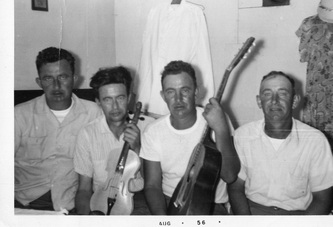
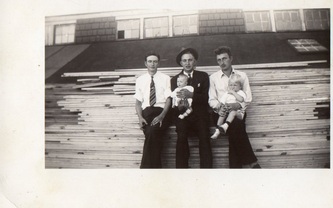
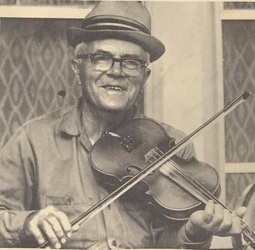



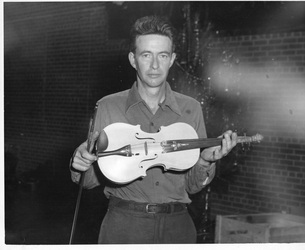
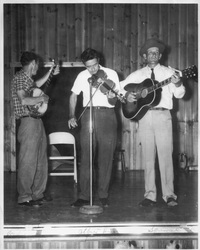

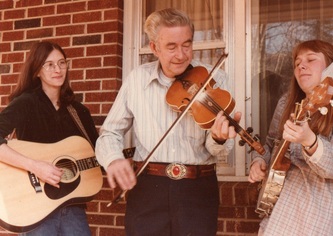
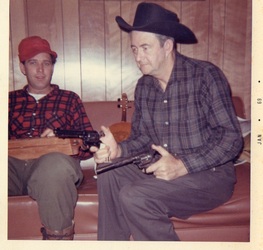
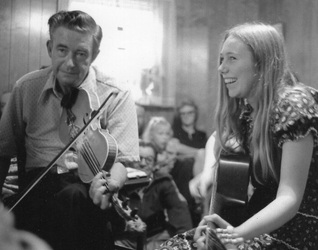
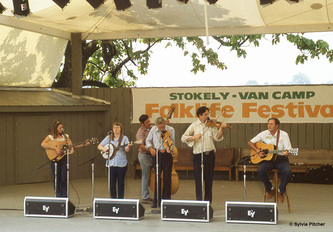
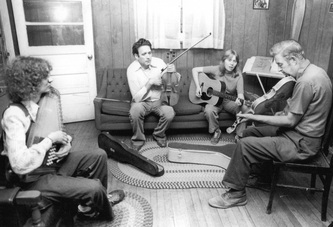
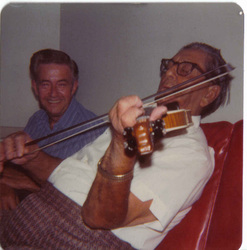
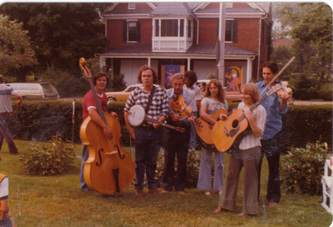
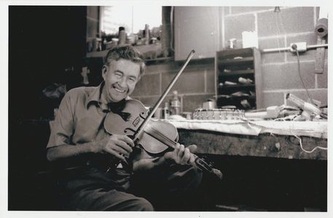
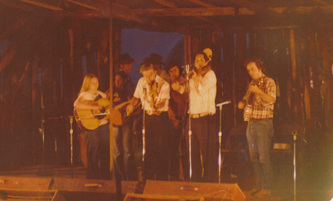
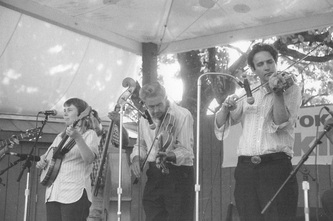
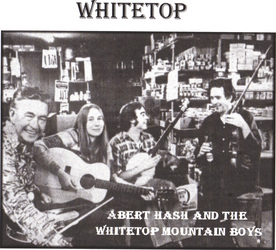
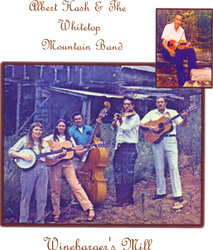
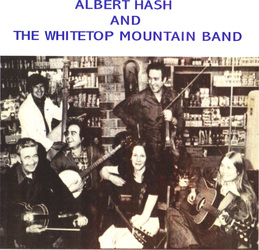
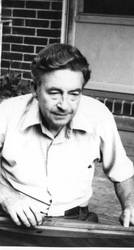
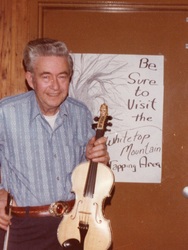
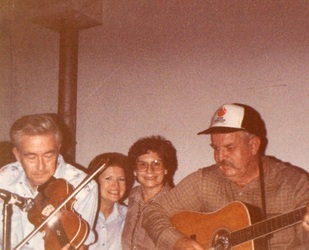
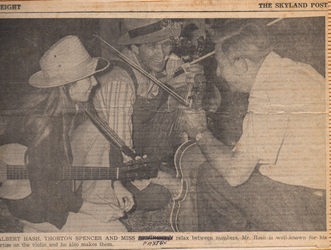
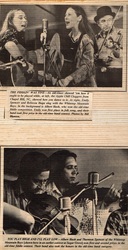
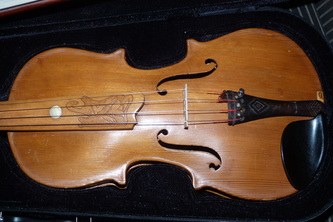
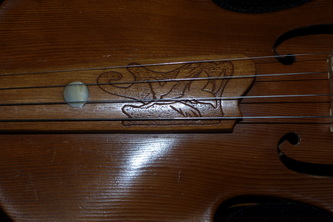
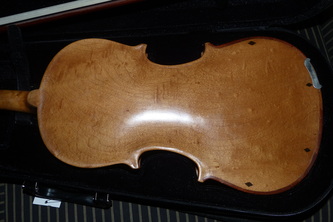

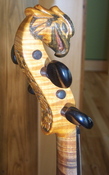
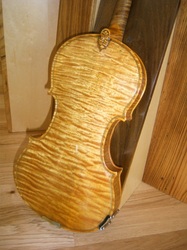

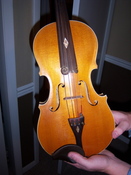
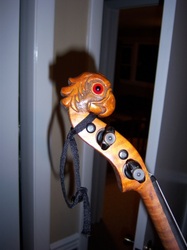
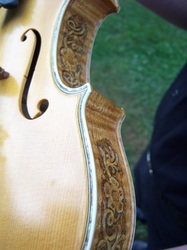
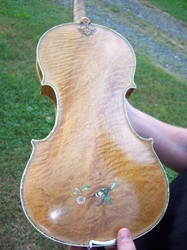
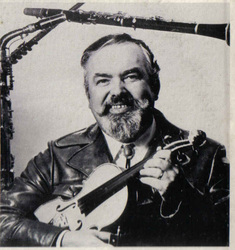
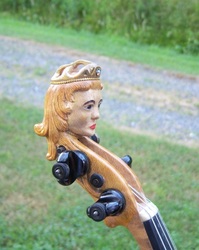



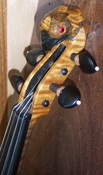

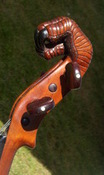


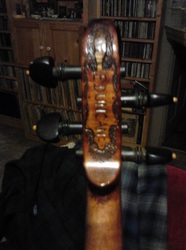
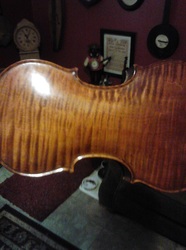
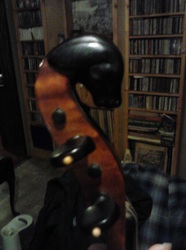
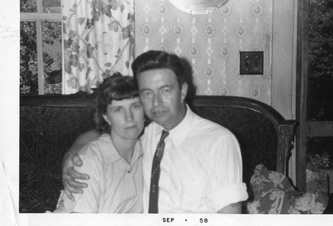
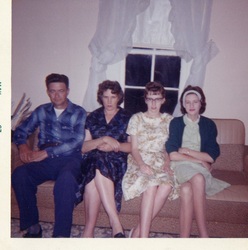
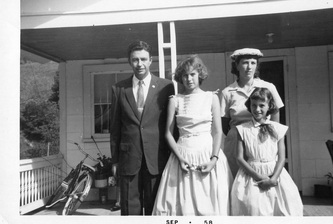
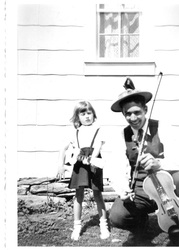
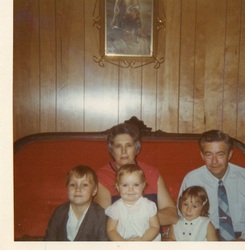
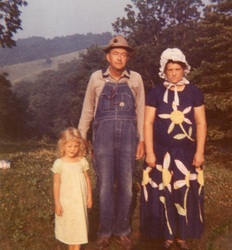
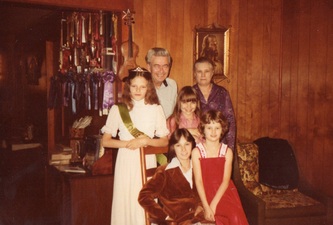
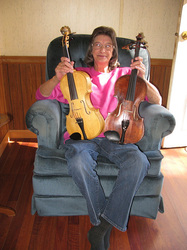

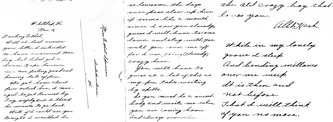

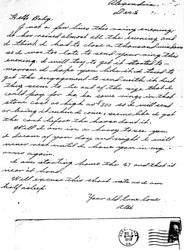
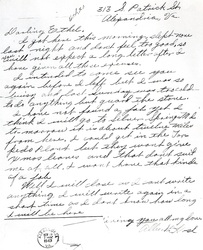
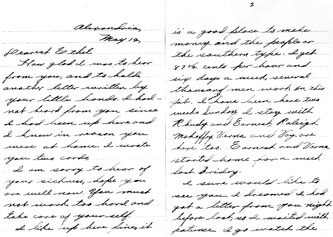
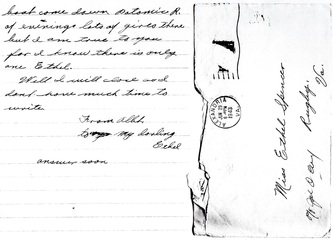
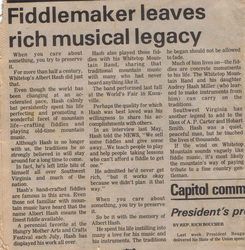
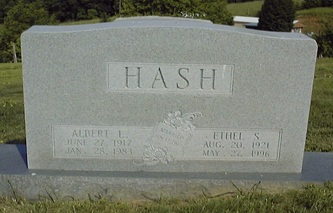
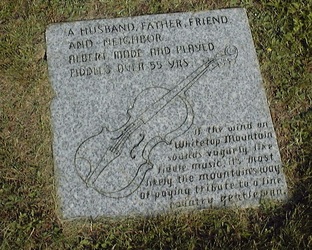
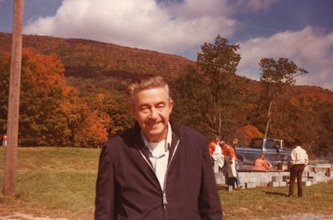
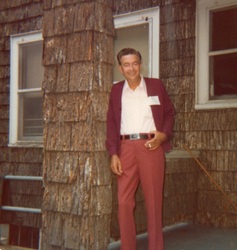
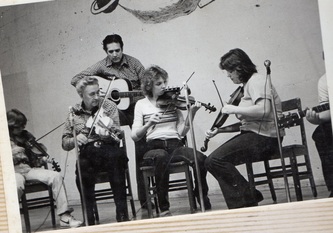
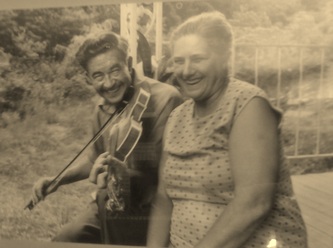
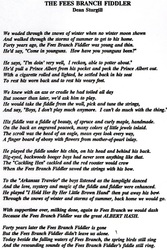
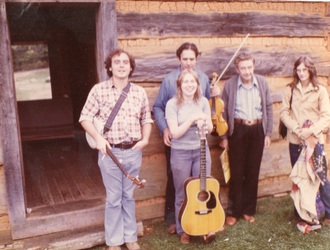
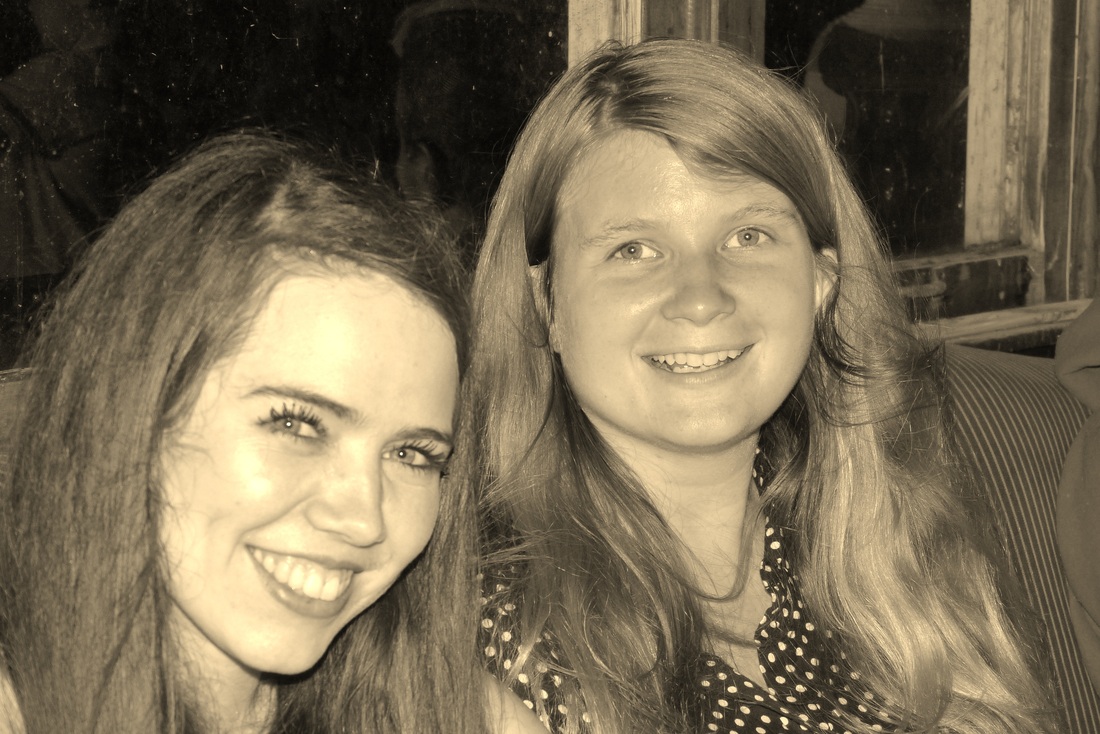
 RSS Feed
RSS Feed